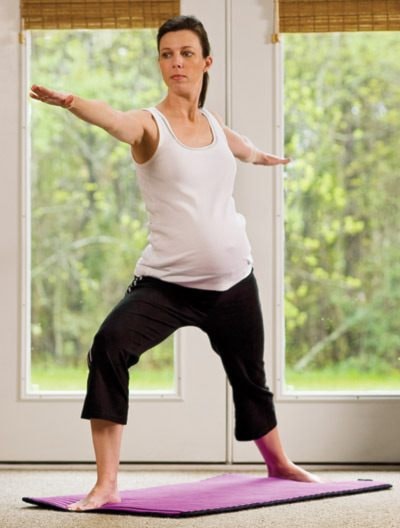Whether you are trying to get pregnant or are nearing your due date, exercise is beneficial. No longer are women told to limit their activities to cooking and knitting for nine months. Instead, health care professionals encourage most pregnant women to keep active, and to enjoy the benefits. Women who stay fit during their pregnancy feel better overall, can reduce some aches and pains (such as a sore back and hips), manage their daily activities better, have an easier time controlling weight gain, and often report a faster recovery after delivery. Exercise may also help to prevent some more serious pregnancy complications such as gestational diabetes and preeclampsia (high blood pressure).
With some slight modifications to your workout routine, you can enjoy keeping active through each trimester in pregnancy.
Exercise in the First Trimester
Even though your bump is barely noticeable, you body is undergoing major changes. If you have a low risk pregnancy, and were not training for a marathon before conception, you can most likely continue your pre-pregnancy exercise routine. Some activities, such as squash, scuba diving, horseback riding, martial arts and high altitude hiking should be avoided. You should also avoid exercising in the heat. In the summer months, exercise in the cooler parts of the day, or indoors in an air-conditioned gym. Before continuing or starting an exercise routine, make sure to get your doctor or midwife’s okay.
During your workout, pay attention to any warning signs to stop exercising. These include: faintness, dizziness, excessive fatigue, vaginal bleeding, blurry vision, decrease in fetal movement, any kind of pain, or signs of preterm labour. Pregnancy is not the time to push yourself through any pain or discomfort.
During pregnancy your exercise goals change. No longer are you training to reach a personal best or to lose weight. Your new goal is to have a healthy pregnancy and to become a healthy mom. With this new goal in mind, you may have to modify your routine. For example, if you are exhausted or battling nausea, take a rest day, or go for a short walk outside instead of to the gym. You may find that you are unable to workout as long or as hard as when you were not pregnant. Let your body be your guide. If something doesn’t feel right, stop, slow down, or modify the exercise.
If you have not been active before, the first trimester is a good time to begin an exercise routine. After getting your doctor’s okay, start with walking or another low intensity exercise. Slowly, build up to exercising 30 minutes three to five times per week.
For cardiovascular exercise, walking, running (if you were running before getting pregnant), swimming, low impact aerobics, stationary cycling or other cardio machines are good choices. If you can carry on a conversation during exercise, you are working at an appropriate intensity. Weight training can be continued as long as the weights are not too heavy (you should be able to lift them 12-15 times in a row) and you don’t hold your breath. Yoga and stretching exercises are good to maintain your flexibility.
Exercise in the Second Trimester
After the 14th week, avoid doing any exercises on your back, such as sit ups, as this position can impede the blood flow to the fetus. As your belly grows, you may need to modify your exercise routine. Again, let your body be your guide. If you find that brisk walking is uncomfortable, slow down, or swap your walk for laps at the pool.
As your pregnancy progresses, you may need to invest in new workout gear to accommodate your changing shape. Many women need to purchase a larger sports bra to fit their expanding rib cage, or a bra with more support. Although maternity stores will sell workout clothes, many stretchy exercise pants can double as maternity pants. Look for longer, larger tops for your expanding belly.
Although exercise is beneficial, your doctor may have advised you to stop exercising. If this is the case, remember that not exercising will not harm your baby. Not exercising is especially hard for those who were active pre-pregnancy. Keep in mind that pregnancy does not last forever, and you will be able to get back into shape post-partum.
Exercise in the Third Trimester
In the home stretch, you may have added discomforts due to your growing size. Ligaments continue to stretch to accommodate your growing baby, which can lead to back and hip pain, and discomfort in the lower abdominal region. Alter your exercise level based on your comfort. Many pregnant women, especially in the later weeks, find water exercise to be the most comfortable.
Exercising during pregnancy has many benefits. However, it is vitally important to be safe. Talk to your doctor before starting, or continuing an exercise program. Most importantly, listen to your body. Enjoy keeping active during your pregnancy!
Tanja Shaw is a Kinesiologist and personal trainer, specializing in weight loss, group fitness, pre and postnatal fitness, and health and wellness programs. She owns Ascend Fitness Coaching, home to Ascend Fitness Boot Camp, Stroller Boot Camp, AND personal training programs. For more fitness tips go to www.ascendfitnesscoaching.com.
